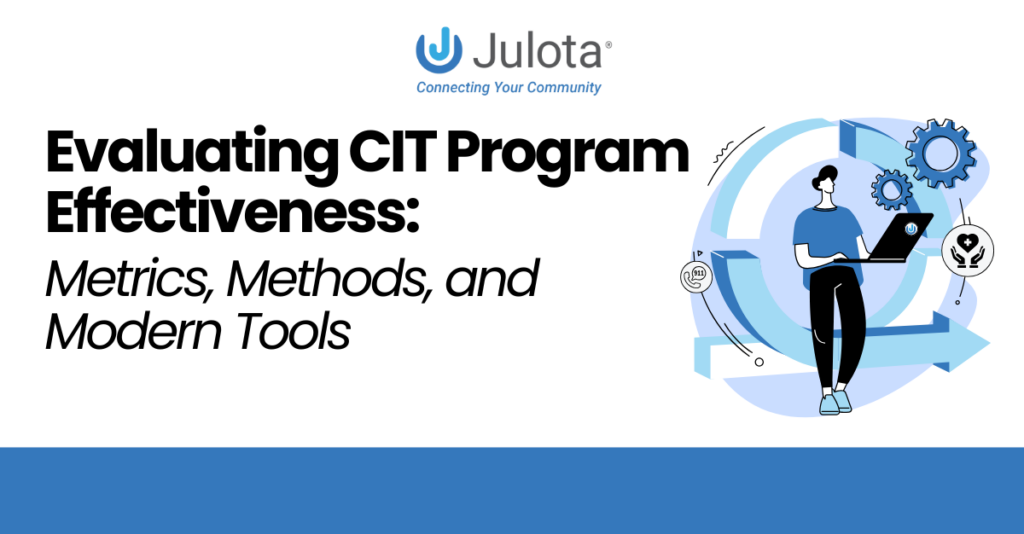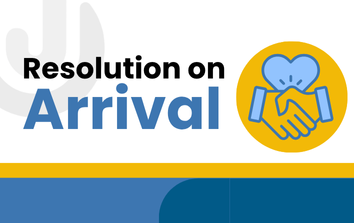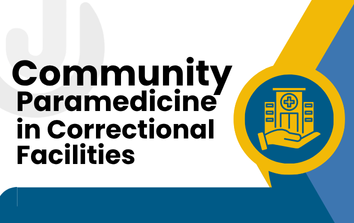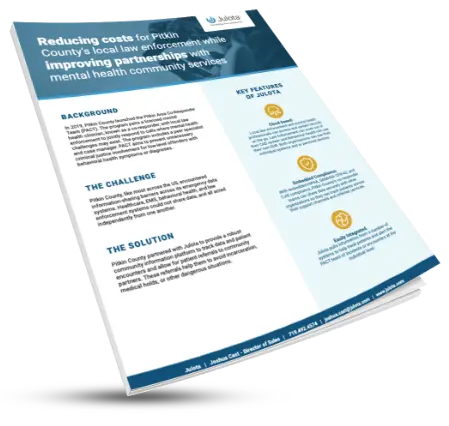Crisis Intervention Teams (CIT) are trained to help people with a mental health crisis, behavioral emergency, and substance abuse struggles. If you’re new to the CIT methodology, you may wonder: How do I know it will be effective in my community? And how have other programs measured their success? This guide will show you the best methods and tools when evaluating CIT program effectiveness.

To evaluate a CIT program’s effectiveness, you must start by looking at some of the numbers—for example, the number of people who might have been arrested without the support of the CIT. Also, there is a reduction in violence in police/mental health call interactions. Essentially, you need to examine the data and the long-term outcomes of individuals who have interacted with the CIT program or CIT-trained personnel. When you can see that people are getting long-term help, you know you’re on the right track.
How Do You Evaluate CIT Program Effectiveness? (And What Does a Good CIT Look Like?)
CIT programs can have various goals, depending on the area and the group of people they serve. Some people may need more substance abuse help, while others will need help solely for behavioral and mental health. Most of the time, a mix of the two is involved.
With all the different ways that crisis intervention programs help people, how do you measure if they are working? There are certainly some positive outcomes to look for, such as people receiving long-term help and freedom from addiction. However, there are also some pertinent negatives to be aware of. For example, has the number of arrests of those with behavioral health crises been reduced?
Furthermore, as the number of violent interventions between officers and those with mental health emergencies declined? Some statistics show that nearly a quarter of police-related fatalities involve someone with mental health challenges.
Signs of an effective Crisis Intervention Team (CIT):
- Preventing Arrest (Peri-arrest situations)
- Connecting People to Mental Health Services and Addiction Recovery Centers
- Building Long-term Relationships with Patients
- Improving the Cost Effectiveness of Mental Healthcare
- Working Toward Preventive Healthcare
- Building Community Partnerships with Modern Tools and Data Collection
Let’s dive in.
Measuring CIT Effectiveness: Preventing Arrest (One Metric to Measure Success)
Avoiding arrest for people who may otherwise end up in jail is huge. Not only does this steer people away from an often overcrowded and overrun penitentiary, but it also gives them the ability to find freedom from mental health struggles.
In many situations, mental health illness can often lead to violent behavior; however, the key phrase is “lead to.” The goal of Crisis Intervention Teams is to improve difficult situations.
So if you’re looking for proof that your CIT program is working, look at the number of people avoiding arrest and joining a path to real healing. If you find that the arrest rate is the same as that of a non-CIT unit, then there may be room for improvement.
Now, let’s discuss mental health care in more detail.
Connecting People to Mental Health Services
Another metric to consider when evaluating CIT program effectiveness is the number of individuals connected to outside services. For example, how many people who have a mental health crisis are associated with a mental health professional?
Furthermore, how many people connected with these professionals are following through and remaining in a specific program? Both those who are associated with these programs and those who stick with them are separate metrics that have value and can tell you a lot about how your program is working.
Another thing to look at would be connecting those who struggle with addiction with rehab professionals. Keeping track of the number of people who find freedom from drug addiction is very important. Not only does this number reveal a great deal about the effectiveness of your program, but it’s also crucial for the team’s morale.
There are some departments that have CIT programs that feel discouraged, as they believe the extra work they are doing isn’t really making an impact. However, when these teams can see a real-world success story, it can give them that little spark they need to keep going.
Measuring CIT Effectiveness: Building Long-term Relationships with Patients
One of the key facets of a good CIT program is its ability to build long-term (or at least longer-term) relationships with the people it is helping. In many 911 or emergency responses, the team will arrive, treat the situation, and then leave. And unless there is a chance encounter in the future, that may be the last time many team members see the person.
With a CIT team, it’s often prudent to perform follow-up visits. For example, if someone overdosed on a Monday, perhaps the CIT team would follow up with them when they are discharged from the hospital on Thursday.
The idea is that the CIT is there for those moments when a person may be vulnerable and needs support. This process might be likened to rehab for someone who has broken a bone. If someone breaks both their legs, they aren’t just discharged from the hospital and told, “Good luck!” Instead, they are provided with tools to help them cope during recovery, resources to aid in their transition back to everyday life, and contact numbers they can call should they need assistance.
The goal of follow-up and long-term care is to treat psychological illness more like a physical problem. CIT programs recognize that those who have mental health illnesses often need much more support than initially meets the eye.
Improving the Cost Effectiveness of Mental Healthcare
One way to assess CIT effectiveness is by conducting a thorough examination of its costs and benefits. Ideally, a CIT program is funded through community partnerships, reducing the burden that any one member needs to carry.
Additionally, in some cases, the CIT can reduce the work hours of other police officers, as they are now responding to calls that a non-specialized unit would typically handle. The idea is that police officers can spend less time responding to mental health-related calls and more time on emergencies that require their skills.
Another way to consider the cost efficiency of the CIT program is how much money it saves the department by reducing the number of calls for assistance. Consider someone who has called 911 ten times in a year. If they only called 911 twice after being connected to a CIT, that would be considered a positive sign of the program’s success.
Measuring CIT Effectiveness: Working Toward Preventive Healthcare
Another way CIT teams are effective is by being proactive in their outreach to key stakeholders. Earlier, we discussed follow-up for individuals who have recently experienced a crisis. But what about visiting someone before the crisis?
This is part of risk stratification in healthcare, and it may have some utility for CIT and co-responder programs. The idea is that CIT programs look at the data and determine who is most likely to have significant mental health struggles that could lead to a crisis situation, and then take action to prevent that from happening.
This information may be stored in the police database or the EMS record. Regardless of the source, identifying individuals who would most benefit from the services enables CIT programs to stay ahead. These methods are proven effective in other areas of healthcare, and you can expect to see them used more frequently in the field.
Building Community Partnerships with Good Data and Modern Tools
If you look back on everything this article has covered, you’ll find that the spine of this topic is data collection. To understand the effectiveness of a CIT program and to set your program up for success, you have to have a way to gather, organize, and read key sets of data.
Everything we have discussed in past sections of this article represents a critical data point: reducing arrests, patient follow-ups, and long-term freedom. If you don’t have a way of measuring these things, then you’re leaving a lot on the table.
You can’t fix something if you don’t know it’s broken. Have a look at Julota’s software tools for CIT programs. Their modern platforms enable easy data collection, reporting, and communication among providers. Julota acts as a central hub and headquarters, where information can be collected at the source, stored, and reviewed as needed.
Alright, let’s run through the top points.
Key Points: The Way Modern Tools Improve CIT Programs
To evaluate the effectiveness of the CIT program, you have to look at the key metrics in your community. Each area will have something different, but it’s important to know what matters most to you.
For example, you might have an area that wants to reduce the number of people who are swept into the criminal justice program. Or you may want to see how many people struggling with substance abuse seek treatment and find long-term freedom. Each of these metrics will give you an idea of the health and quality of your CIT Program.
Contact Julota now to uncover how their software tools can help you evaluate your CIT program’s effectiveness.




